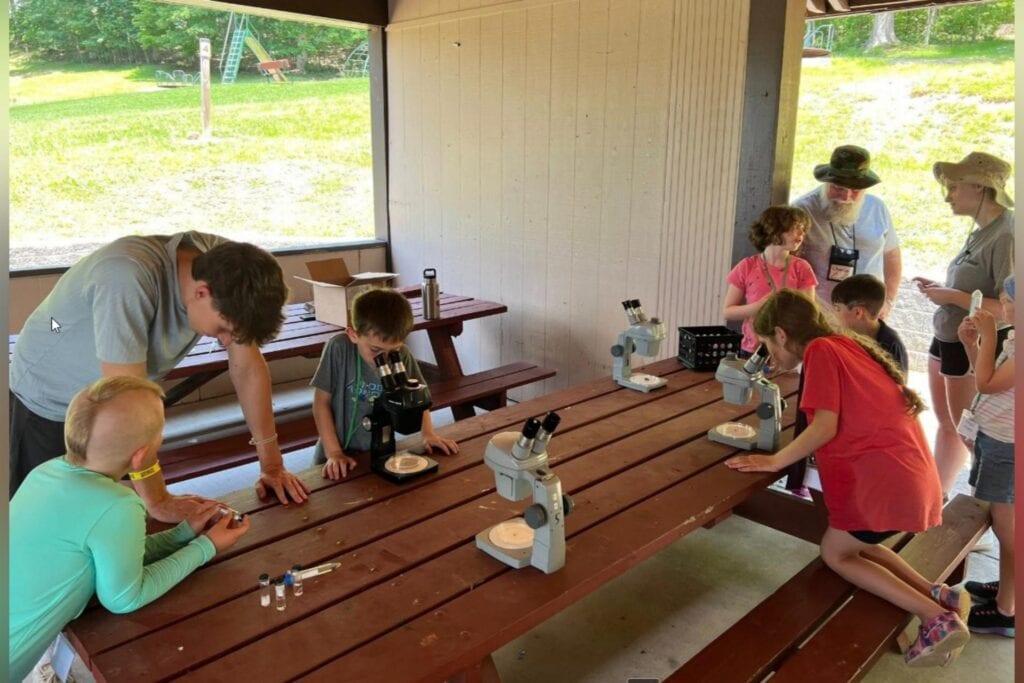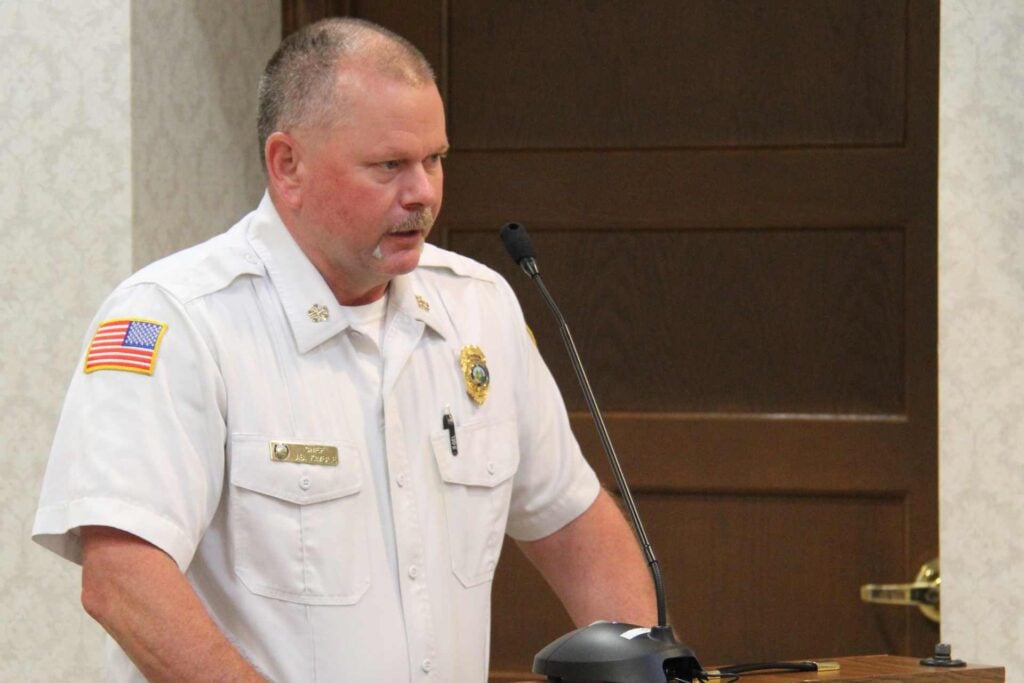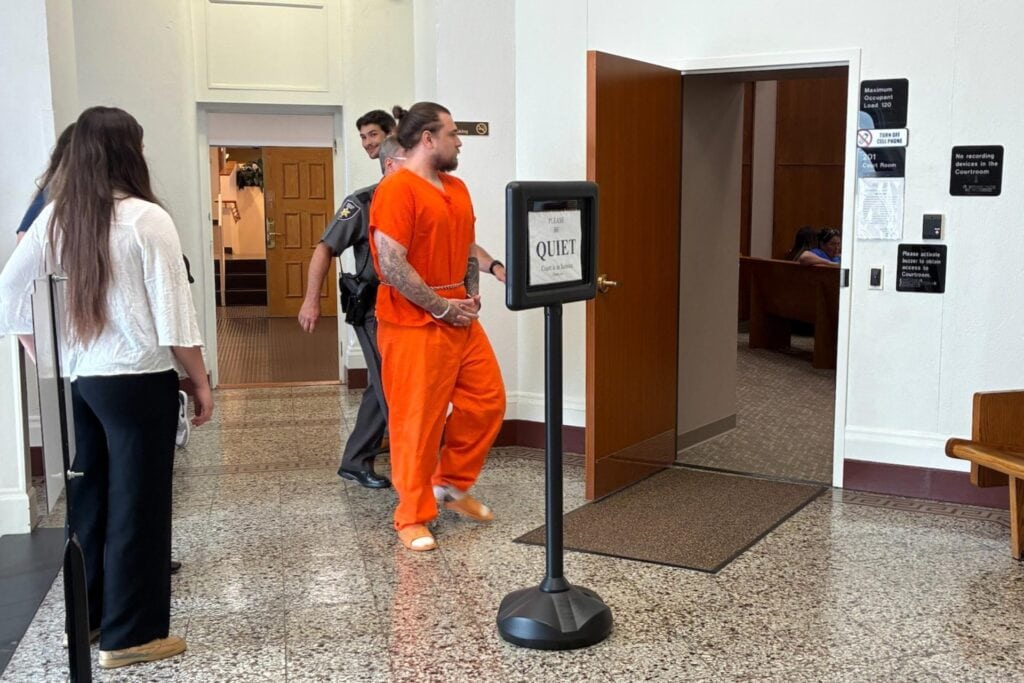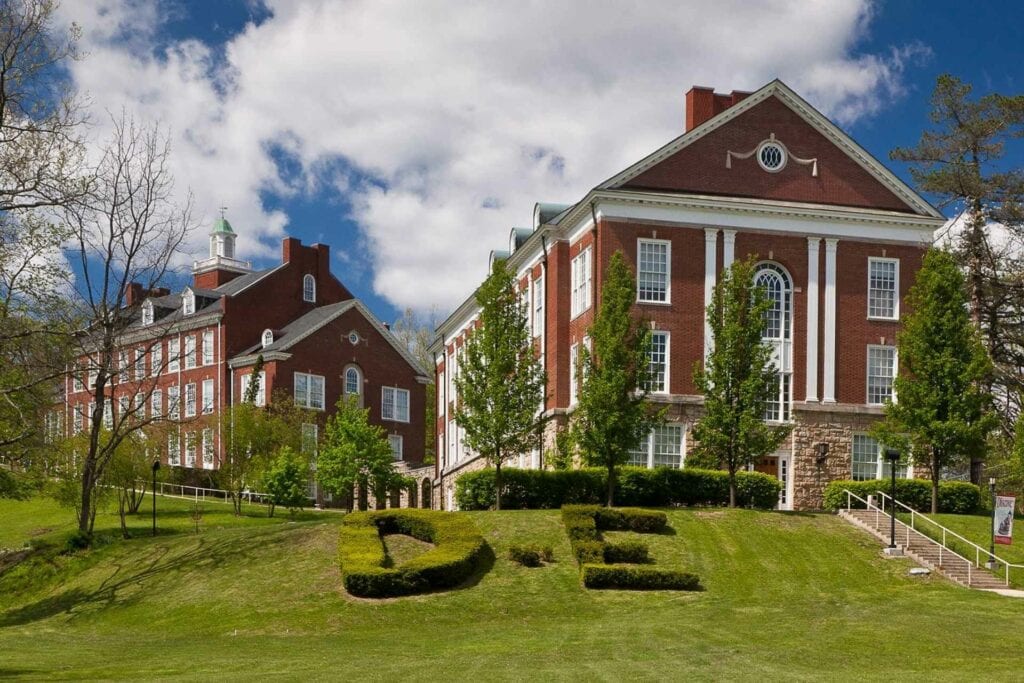While many college students are spending their summer working or attending summer school, Jessica LaBella is one of several West Virginia Wesleyan College students benefiting from a Summer Undergraduate Research Experience. The program is funded by the West Virginia Higher Education Policy Commission.
Labella, a junior from Bridgeport, received the SURE grant fellowship to work on the project entitled “Effect of Light Interception on Photosynthetic Capacity and Vegetative Reproduction of the Endangered Plant, Running Buffalo Clover” with Dr. Jordge LaFantasie, assistant professor of biology and director of the greenhouse, as mentor.
Running buffalo clover (Trifolium repens, RBC) is an endangered forest-edge/meadow species that requires filtered light to grow and reproduce. Historically, the plant was maintained by various disturbances, including bison trails, grazing and wallows, tree fall and fire.
Many of these ecosystem disturbances have been removed from eastern deciduous forest by humans, thus, RBC habitat is diminished. Once a disturbance is removed and trees encroach on an area, RBC can no longer compete for light and is locally exterminated.
Currently, RBC populations are maintained by various human-controlled endeavors including skid trails, roads, cattle grazing and other forest management practices. Some of the most successful RBC populations occur in fairly recently logged locations with skid trails (small roads). This is likely due to the availability of nutrients and light that are not accessible in denser forested areas.
LaBella’s objective is to investigate the effect of light availability on RBC’s ability to photosynthesize and reproduce. Information gleaned from this study will add to the body of knowledge that currently guides RBC and forest management.
In collaboration with the USFS, 19 RBC occurrences in the Fernow National Research Forest have been selected for the study based on the variety of light and tree canopy conditions. LaBella has placed HOBO light meters with dataloggers at the center of each occurrence to measure the amount of light each location receives over a period of ten days.
She is measuring the number and length of stolons, which are modified stems that allow for RBC reproduction, to determine the ability of the population to sustain itself. She will relate both of these to her measurements of the photosynthetic capacity of the same RBC plants. The amount of sunlight available to a leaf influences its ability to photosynthesize and therefore produce food necessary for the plant’s survival. This type of measurement requires specialized equipment and we are fortunate to have been awarded two grants and donor contributions for the purchase of a LI-COR 6800 photosynthesis system this spring. The data LaBella collects will help her to determine whether incident light affects reproduction and photosynthesis, and may potentially indicate how much light is needed to maintain RBC stands at the site.
The research experience has provided LaBella with several benefits, including a few that were unexpected. “I accepted this research opportunity to gain more experience in practical applications of my major as well as to keep my options for when I graduate,” she noted. “This project has provided the chance for me to gain a greater depth of knowledge on concepts discussed in classes, as well as learn proper lab techniques and gain hands-on-field experience. It definitely has offered a challenge in the sense that research requires a higher level of thinking and of problem-solving skills.”
LaBella has also discovered additional career paths as a result of the experience. “For as long as I can remember, it has been my dream to attend veterinary medicine school,” she added. “However, since pursuing this opportunity, I have begun to consider other options. I have fallen in love with research and am now giving serious thought to pursuing a Ph.D. in some field of biology. If I am lucky, I can research for a living and that sounds like a dream job.”
Labella is one of ten Wesleyan students participating in a SURE Grant program. Dr. Joanna Webb, assistant professor of chemistry, was the author of the SURE Grant application.













